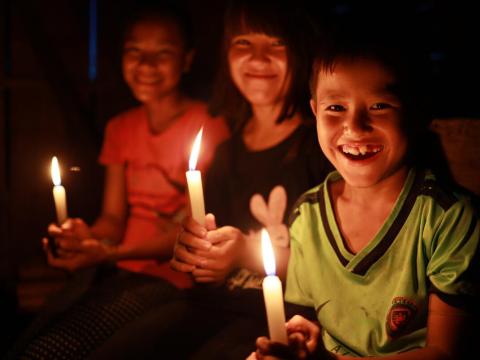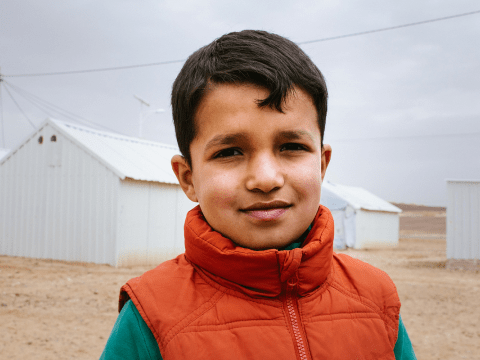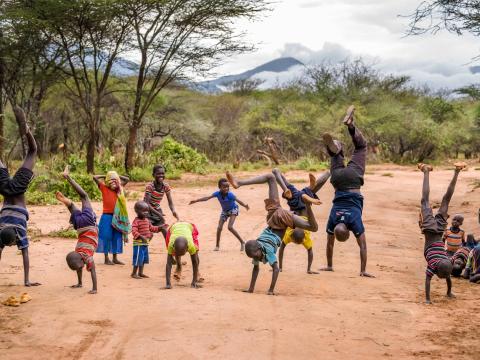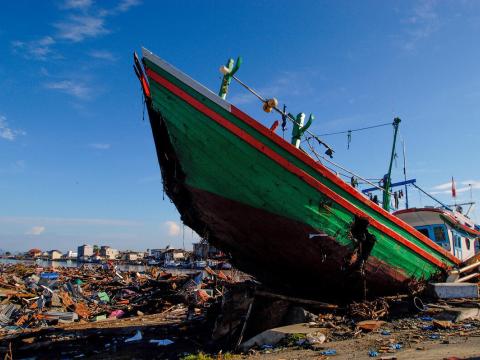
The 2004 tsunami taught me many things, but six in particular
Margarettha Siregar shares six things she learned from responding to the 2004 tsunami in Aceh, Indonesia.
I still remember 26th December 2004 very clearly. I was preparing to go with my mother for Sunday Mass when I heard the breaking news about the tsunami hitting Aceh, the western most province of Indonesia. Back then, there was little public awareness about tsunamis and there was no official tsunami warning system. Each hour the number of casualties, mostly women and children at that time, kept increasing at a rapid pace. It was hard to comprehend the sheer devastation, as the world, back then, had never experienced a catastrophic event of such magnitude.
For the next few months, the only news that mattered in Indonesia and in much of the world was the tsunami disaster caused by magnitude 9.1 undersea earthquake off the west coast of Sumatra. It claimed the lives of 230,000 people across multiple countries; 100,000 of Indonesia's 167,540 died in Aceh alone. It was perhaps the first time a wave of grief swept right around the world.
Part of the outworking of that global sadness was the vast amount of funds donated by people everywhere to help affected communities rebuild. World Vision received $356 USD million from a range of donors, both general public, governments, companies and more, towards our post-tsunami programming in Indonesia, Sri Lanka, India, Thailand and Myanmar, helping more than 1.16 million people to rebuild their lives.
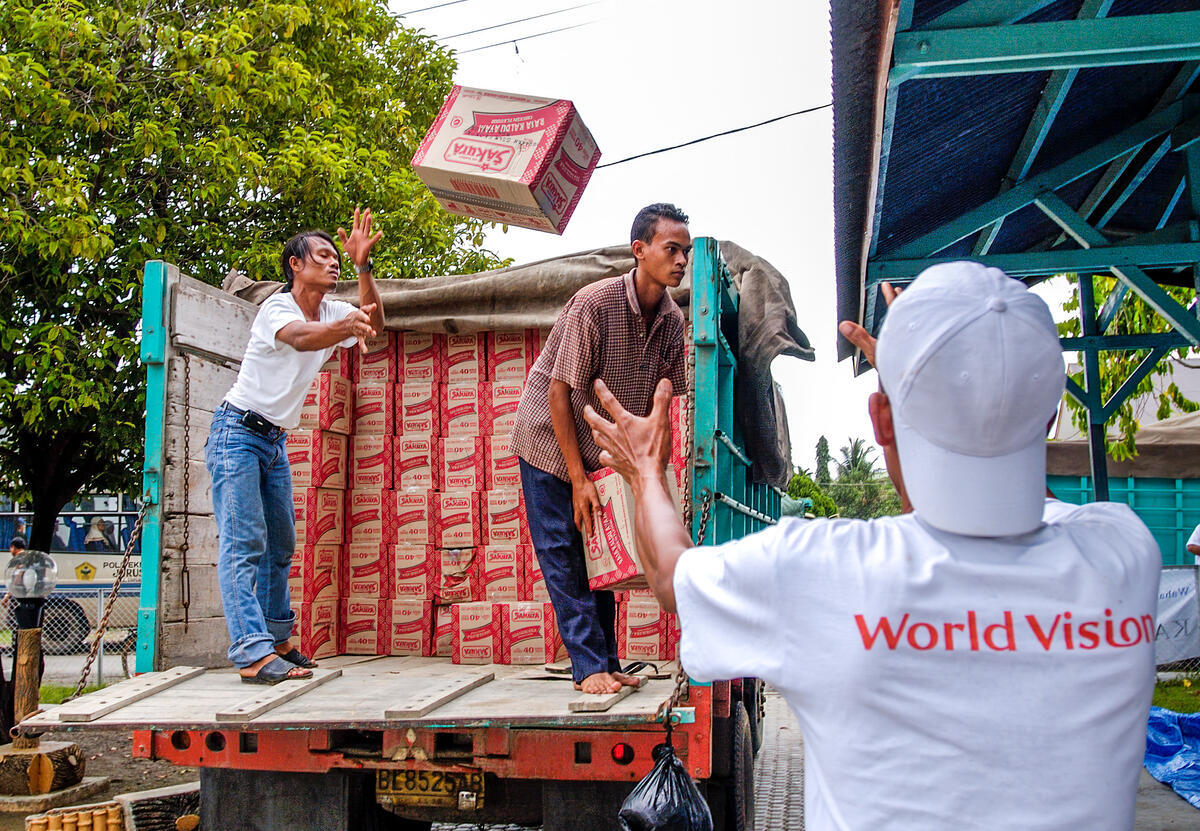
Being a child-focused agency, under-18s were at the heart of World Vision's response, and I particularly remember the child-friendly spaces we established where little ones could be safe, and have a chance to play and learn. We also provided child psychosocial support activities and supported rebuilding schools and educational facilities.
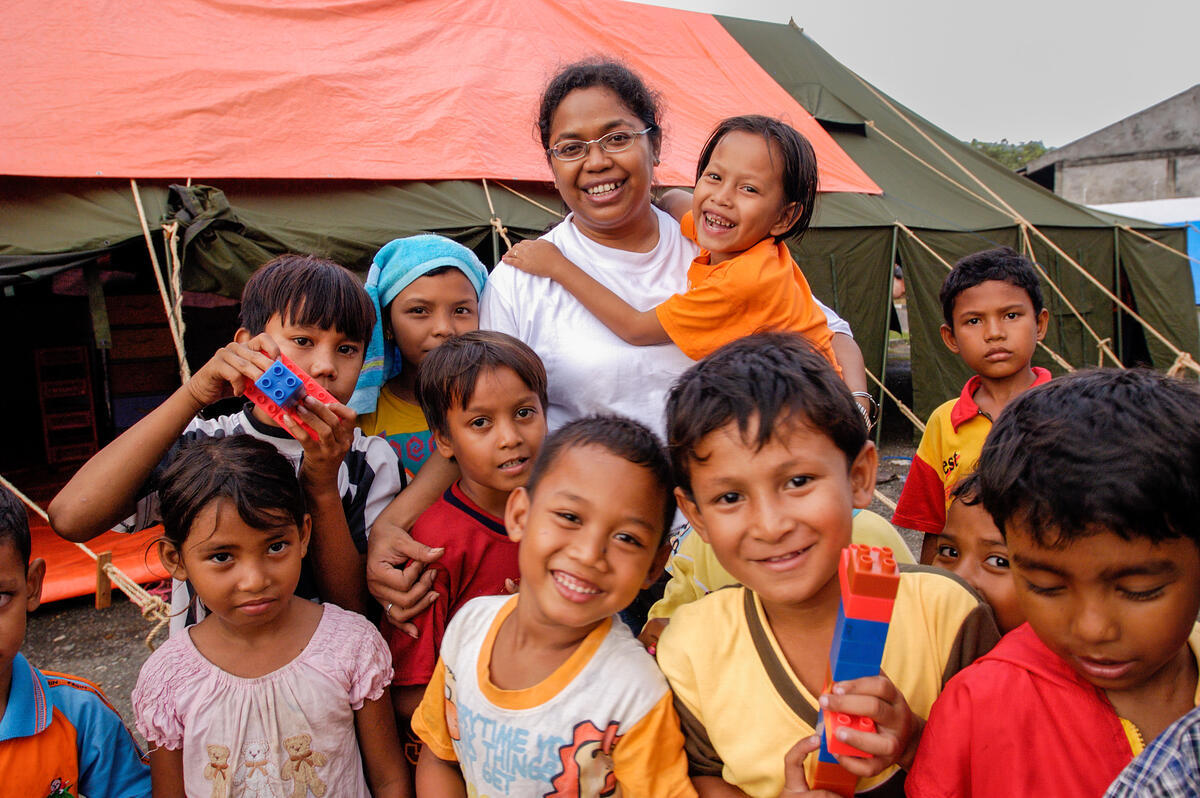
The tsunami response was, perhaps unsurprisingly, the toughest response I have supported in my career; it was a time of overwhelming challenges and complexity. Yet, it was also a turning point that helped the world realize the importance of the humanitarian and development nexus; accountability to affected people; access to early warning systems; and preparedness for all. Twenty years on, as I reflect back there are a few key lessons worth learning from the response to this most terrible of natural disasters:
1. Improve the Early Warning Systems and Anticipatory Action.
Despite the advancement of technology, even though post-2004 more early warning system have been installed it is still challenging to forecast disasters like tsunamis. These systems can only provide between a few minutes and a few hours for evacuation, and communication lines can sometimes be destroyed before warnings reach the affected people. That is why having long-term preparedness plans is better and a more viable option. Regular simulations are necessary to train human reflexes and ensure all facilities are functioning properly. Communities need to be made more aware of how to respond when a tsunami strikes.

We can, however, now access earlier forecasts for cyclones and floods: 3 to 10 days in advance. The improved impact-based forecast and early warning systems helps us to do more than just prepare but also conduct Anticipatory Action programming so that pre-financing support can be provided for the risk-affected community ahead of the disaster giving them a better chance to save lives, assets and recover faster.
2. Prioritise accountability to the affected population
We also need to strengthen our accountability towards affected people. Listening to the people, especially children, women, people with disabilities, and to other marginalised groups, really helps us to learn and improve our response to really meet their needs. World Vision developed the Programme Accountability Framework in 2010 comprising 4 pillars:
- Providing information so children and communities can make informed decisions, knowing what to expect from World Vision;
- Children and community consultation, including the most marginalised groups;
- Inclusive children and community participation;
- Collecting and acting on feedback and complaints so children and communities can voice their ideas and concerns, enabling our work to be more relevant
It is inspiring to see World Vision globally implementing the Community Feedback and Response System in both development and relief efforts, particularly embodying two of our core values: We Committed to The Poor, and We Value People.
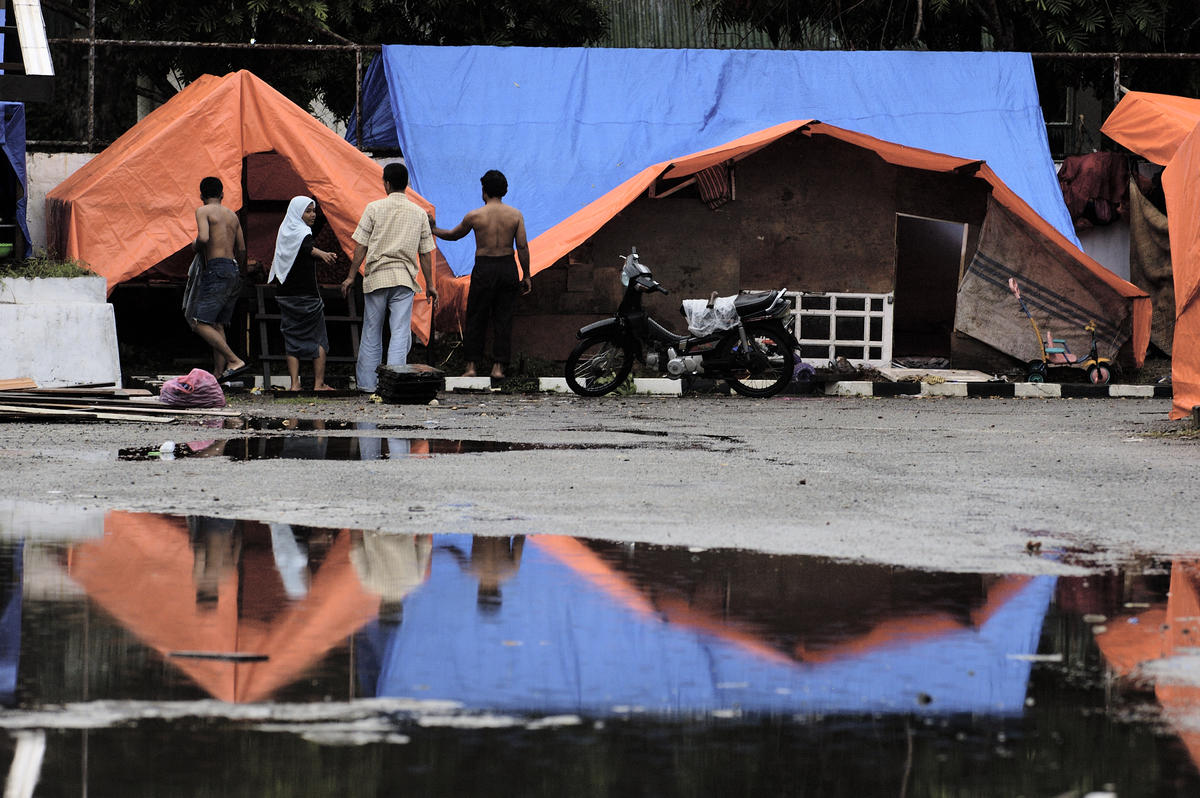
3. Strengthen disaster risk reduction interventions to protect development investment
Because disasters such as earthquakes, tsunamis and landslides are still unpredictable, the long-term disaster risk reduction plan activities are necessary to reduce potential damage and loss. Development and humanitarian actors should continuously promote these disaster mitigation measures through policy advocacy and development programmes as part of the solution to reduce the earthquake, tsunami and liquefaction risks. The initiatives include:
- improving safety codes for resilient buildings and infrastructures;
- nature-based solutions to reduce the risks of floods and landslides;
- land use mapping and restrictions for dangerous or disaster risk zones; and
- national and community emergency pool funding, insurance and other disaster risk financing.
4. Find sustainable solutions for resettlement of affected population
The 2004 tsunami experience showed me that resettlement of affected populations was a significant issue, and today it is still a challenge that faces humanitarian organisations, especially when it is resettlement for the long term. That is why urban planning needs to include disaster mapping. It is crucial for development agencies to jump into action during recovery and rehabilitation. "Urban resilient planning" should no longer just be a buzzword.
Therefore, there should be continuation from relief rehabilitation to longer term development works. World Vision continues to stay and support disaster affected community after the disasters. In Thailand, 20 years ago after the tsunami disaster World Vision works with the community for mangrove reforestation and works with youth leaders to maintain the mangrove forests. When disaster strikes World Vision staff are on the ground quickly providing immediate support; but we also stay for the long term, rebuilding lives for children, families and their communities.
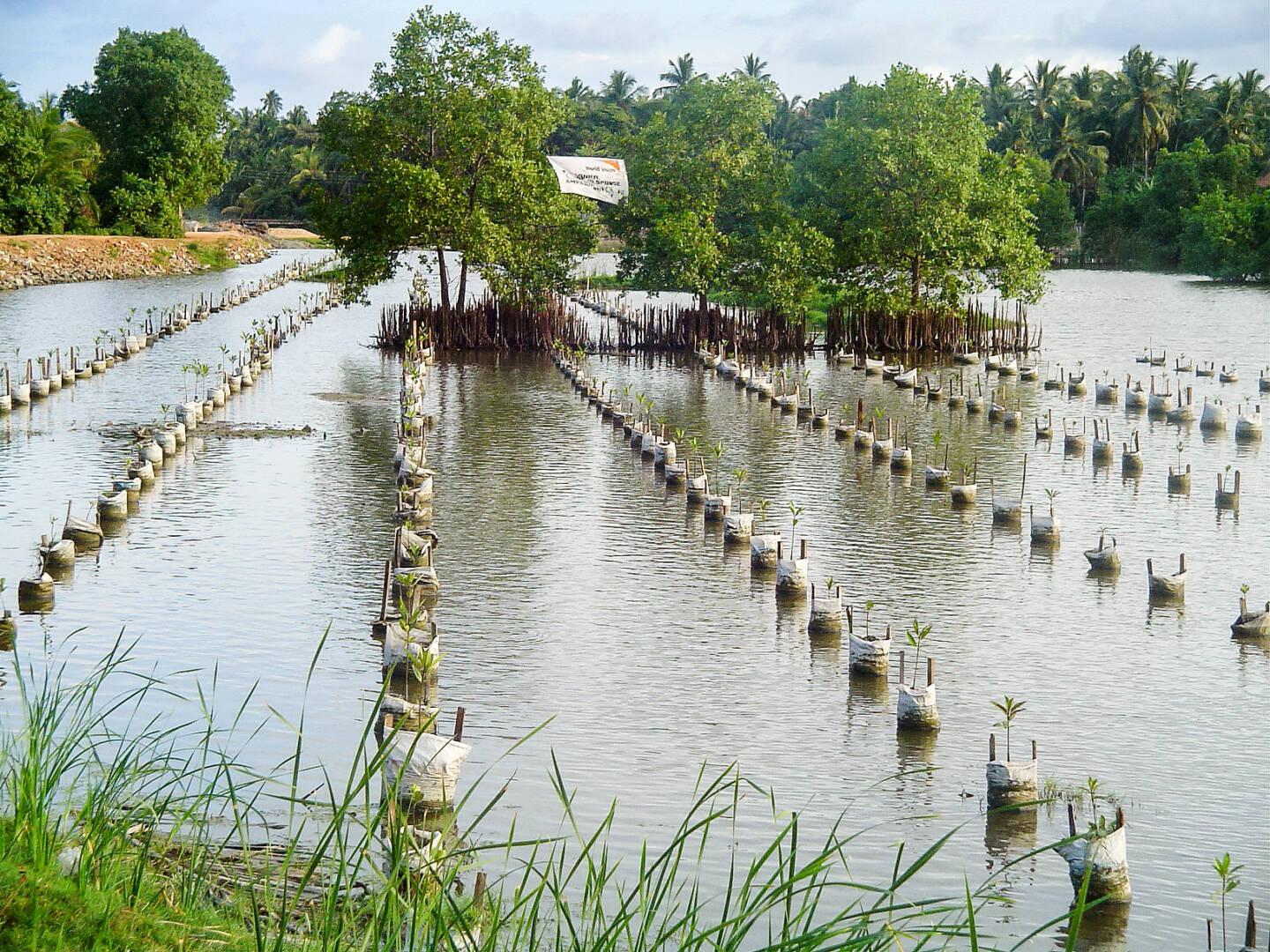
5. Strongly consider cash programming as a means to rebuild the local economy
Implementing cash programming as preferred modality of the humanitarian and recovery assistance should consider the local market price and capacity, minimum wages and expenditure. If done properly, it promotes dignity for people affected by emergencies, provides them with choice, control and flexibility. It also builds resilience, by driving the recovery of local markets, connecting local to global suppliers, building the local economy where supply is adequate and accessible to the most vulnerable community members.
6. Make the voices of children central for sustainable child-focused disaster mitigation initiatives and climate action
We must protect children by placing them at the centre of disaster management. World Vision and partners recently supported children and youth in presenting their research findings report called “Advocates for Change” and in giving a call to action to global leaders at the Asia Pacific Ministerial Conference for Disaster Risk Reduction 2024. The Children and Youth Call to Action in the conference emphasizes integrating disaster risk reduction into education, leveraging technology, building resilient communities, prioritising investment in youth-led initiatives, and ensuring no children and youth are left behind in disaster risk reduction efforts.
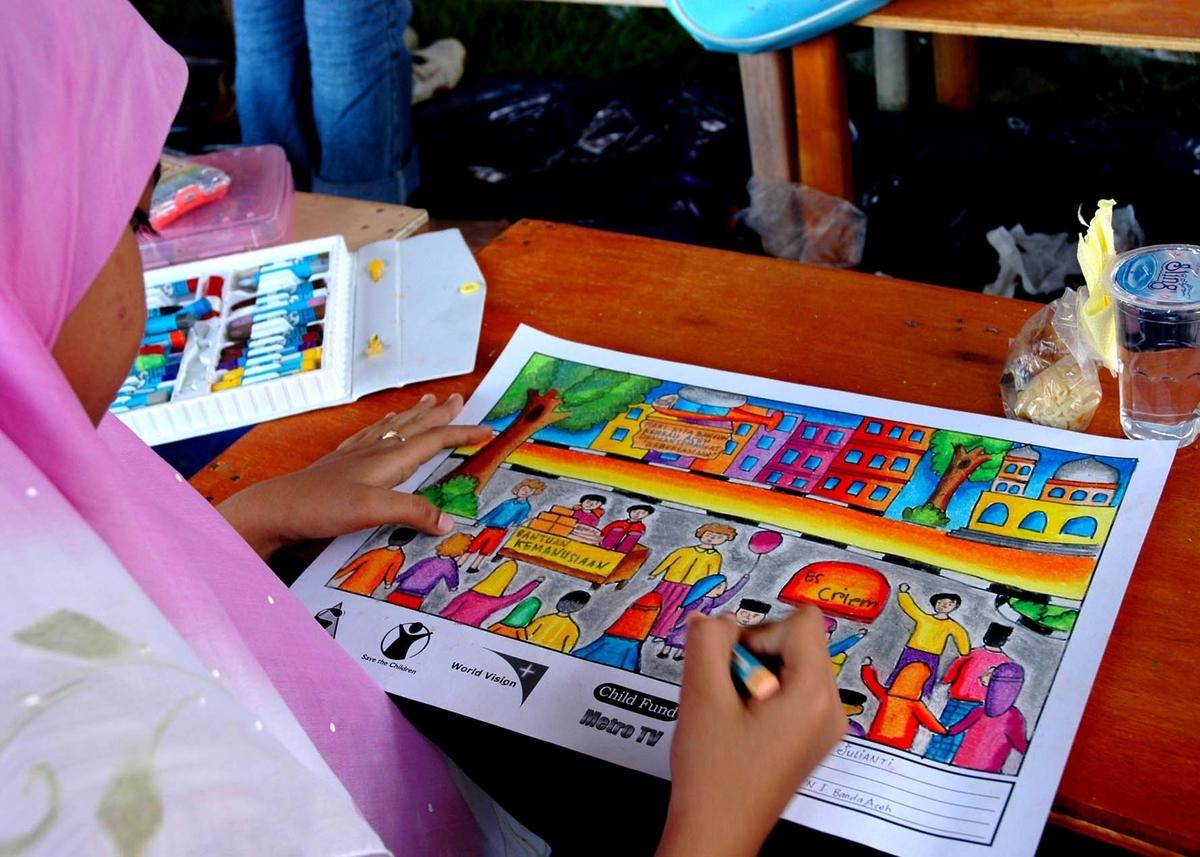
World Vision East Asia also published the report ' Young Minds Shaping Climate Action & Disaster Mitigation for a Sustainable Future, based on a survey conducted by 28 World Vision child and youth leaders, aged 12-18 years, across six countries. It reveals that, underpinned by the low to moderate levels of disaster preparedness in vulnerable communities, there is a pressing need to strengthen climate education (formal and informal) and disaster mitigation through school programmes and social media channels.
Such initiatives highlight the importance of providing children and youth, who are among those most affected by climate change, platforms to amplify their voices in shaping effective solutions. One such initiative is the Comprehensive School Safety Framework developed by child-focused humanitarian and educational actors in 2022, tries to advocate for disaster risk reduction education in the school curriculum; for a resilient and safe school structure and environment; and for survival skills for children and educators including evacuation plan and proper management of disasters by school staff.
Another is in Mongolia, where The Junior Rescuer Club was initiated and established in public secondary schools in 2014 by World Vision Mongolia (WVI Mongolia). This has proved to be a key effort in advancing Mongolia’s participation in the UN Office for Disaster Risk Reduction's Worldwide Initiative for Comprehensive School Safety. These clubs significantly contribute to Pillar 3: Risk Reduction and Resilience Education, serving as an efficient platform for building disaster risk reduction (DRR) knowledge and fostering resilience among children. The programme has been scaled up and is now rolled out under the government’s management, with NEMA and its local branches overseeing implementation at the school level. World Vision continues to collaborate with government partners to support this effort.
While the world seeks to reduce the chances and impact of natural and man-made disasters, we can and should all find better ways to prepare people to cope and recover when a crisis occurs. It's not just a matter of survival, but a matter of dignity.
ENDS
Margarettha Siregar, Senior Manager, Regional Humanitarian & Emergency Affairs, East Asia.
